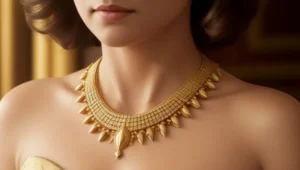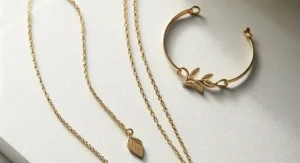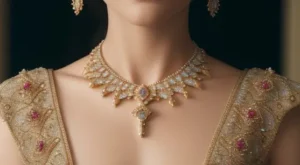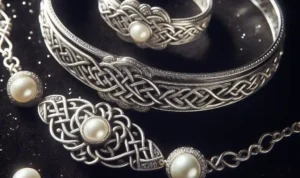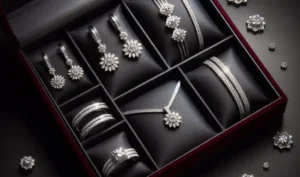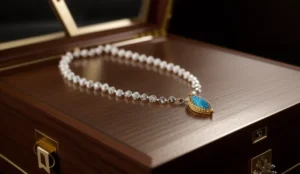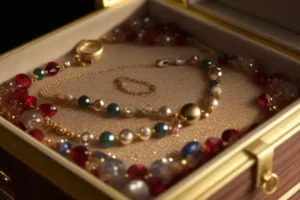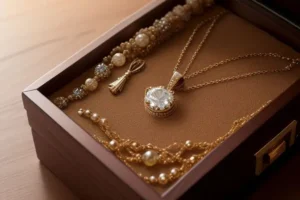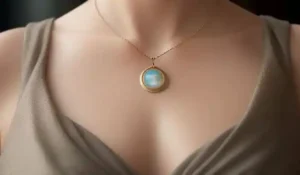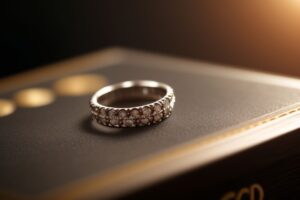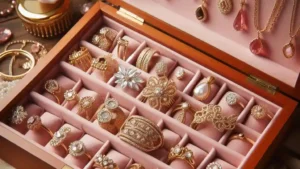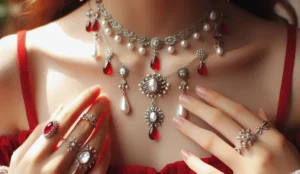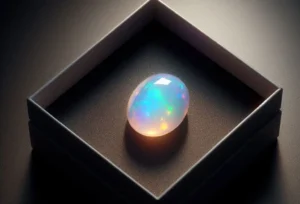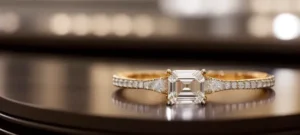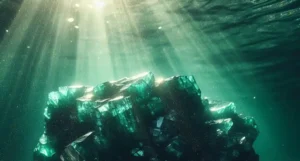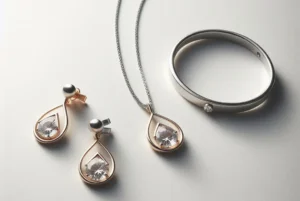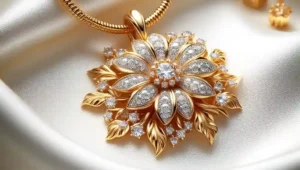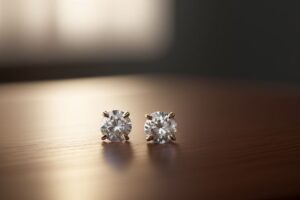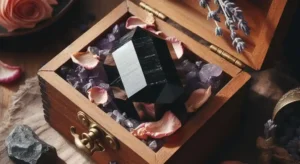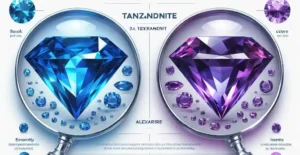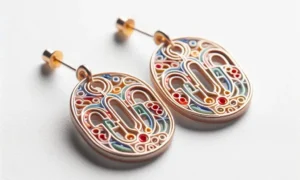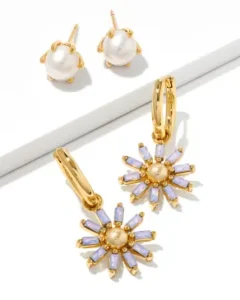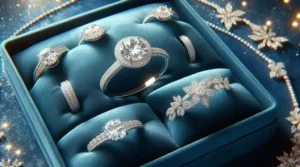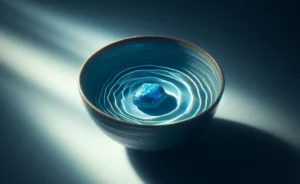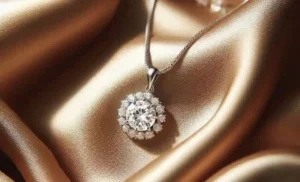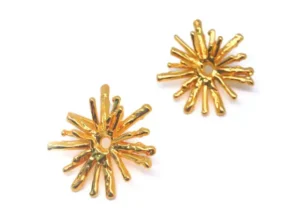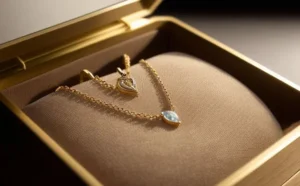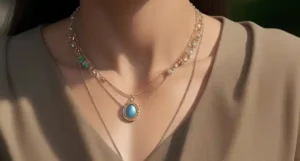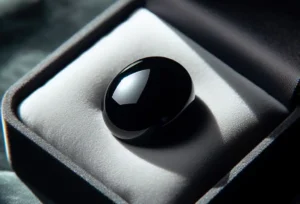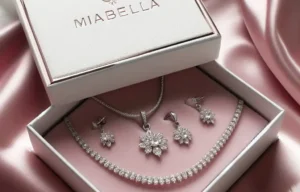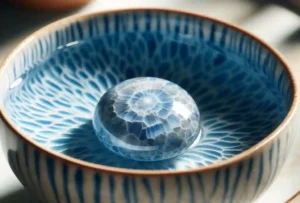Labradorite, a captivating gemstone known for its stunning labradorescence – an optical effect that displays vivid flashes of color – has intrigued collectors and jewelry enthusiasts alike.
But amidst its allure, a practical question arises: Can labradorite handle water? This inquiry not only affects how one might care for labradorite jewelry but also touches on the broader understanding of gemstone maintenance.
In this blog post, we delve into the intricacies of labradorite’s relationship with water, unraveling myths, confirming facts, and providing guidelines to ensure the longevity and beauty of this mesmerizing stone.
Can Labradorite Get Wet?
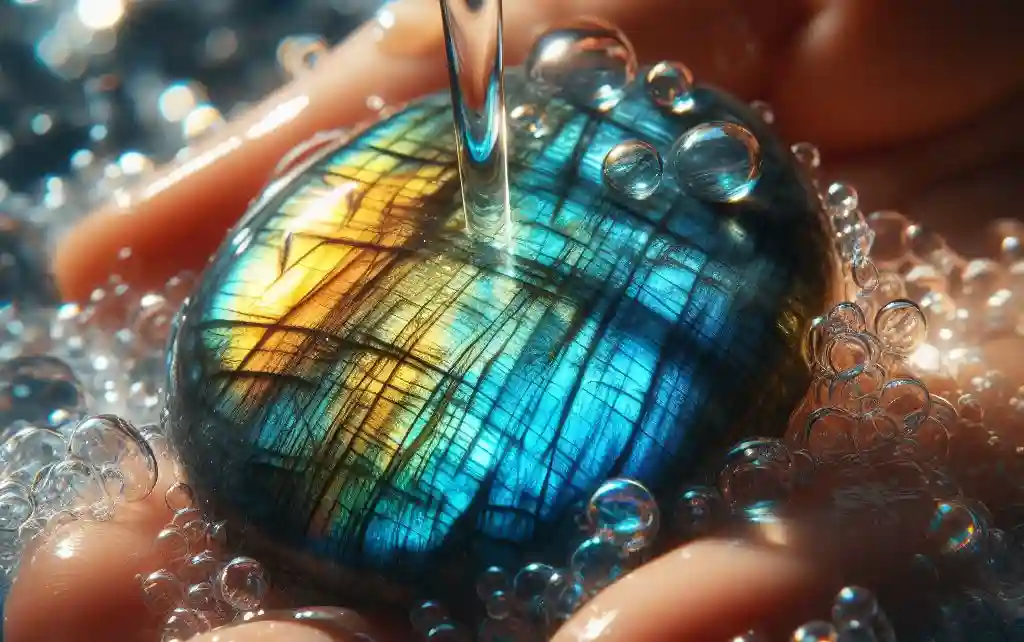
Yes, labradorite can get wet without immediate damage, as water in itself does not inherently harm the stone. However, it’s important to consider the duration and conditions of exposure. Short-term contact with water, such as raindrops or a quick rinse, is generally safe for labradorite.
This means that activities like handwashing or a light cleaning won’t pose a significant risk to the stone, provided it is dried promptly and thoroughly afterward.
Nevertheless, it’s crucial to avoid prolonged immersion or frequent wetting, especially in environments where chemicals or extreme temperatures could exacerbate potential damage.
Keeping labradorite dry in certain situations helps maintain its structural integrity and appearance, ensuring that its captivating labradorescence continues to enchant without being dulled or damaged by water-related risks.
Understanding Labradorite’s Composition and Structure

Labradorite belongs to the feldspar family, a predominant group of minerals making up a significant portion of the Earth’s crust. Its mesmerizing effect, known as labradorescence, arises from its unique internal structure, which refracts light into vibrant flashes of color.
This stunning optical phenomenon is a direct result of the specific way in which layers within the stone scatter light. With a Mohs hardness rating between 6 and 6.5, labradorite is relatively resistant to scratches from softer substances, yet it remains susceptible to abrasions from materials with a higher hardness level.
Its natural composition may include cleavages or microfractures, which are internal structures that could be vulnerable to external forces or changes in temperature.
These characteristics of labradorite’s composition and structure are fundamental to understanding its physical properties and how they might interact with environmental factors, such as water.
The Impact of Water on Labradorite
While water doesn’t directly harm labradorite, its effects over time can pose risks. The stone’s natural fractures or microcracks are vulnerable to water penetration, which could weaken its structural integrity with repeated or prolonged exposure.
Additionally, in environments with fluctuating temperatures, water trapped in these imperfections can freeze, leading to expansion and potential widening of the cracks.
This process not only risks the physical structure of labradorite but can also affect its unique optical properties by altering the internal reflections that contribute to its vibrant flashes of color.
Moreover, the presence of water can facilitate reactions between the stone and environmental chemicals, which might result in surface damage or a dulling of its natural luster.
Thus, while labradorite’s interaction with water may not always be immediately detrimental, cautious handling and avoidance of unnecessary wet conditions are advisable to preserve the stone’s beauty and integrity over time.
Situations Where Labradorite Should Stay Dry
To preserve the beauty and structure of labradorite, certain precautions should be taken to minimize its exposure to water. Activities such as swimming and bathing can expose the gemstone to prolonged periods of water contact, which is best avoided.
Similarly, engaging in household chores like dishwashing can also subject labradorite to unnecessary moisture, especially if harsh detergents are involved. Environments that generate steam or high humidity, such as saunas or steam rooms, are other scenarios where labradorite should ideally remain dry.
When labradorite is set in jewelry alongside materials prone to tarnish or corrosion, such as certain metals, or incorporated into pieces with water-sensitive adhesives, extra care should be taken to limit its contact with water.
This approach helps safeguard both the gemstone and its complementary setting, ensuring the ensemble’s longevity and visual appeal. By being mindful of these specific situations, owners can contribute significantly to maintaining labradorite’s captivating appearance and structural integrity.
Proper Cleaning Techniques for Labradorite
To maintain the luster and integrity of labradorite, a gentle approach to cleaning is essential. Begin by lightly wiping the surface with a soft, lint-free cloth dampened with water. This will remove any surface dirt or fingerprints without introducing harsh chemicals that could damage the gemstone.
If the labradorite exhibits more stubborn grime, a solution of mild soap and water may be used with caution. Dip the cloth in the soapy solution, wring out excess liquid, and carefully clean the stone. It’s vital to avoid soaking the gem, as prolonged exposure to water can be detrimental.
Immediately after, rinse the labradorite with a clean, damp cloth to remove any soap residue and then thoroughly dry it with another soft, dry cloth. This method ensures that labradorite retains its stunning visual appeal without compromising its structure or the vividness of its labradorescence.
Remember, the use of abrasive materials, ultrasonic cleaners, or steam cleaners should be avoided to prevent potential damage to both the gemstone and any accompanying jewelry settings.
The Effects of Water on Labradorescence
While a brief encounter with water can momentarily accentuate the vibrant play of colors characteristic of labradorite, this effect is temporary. The phenomenon occurs as light refracts differently on the wet surface of the gemstone, making its inherent labradore scence seem more pronounced and the colors more vivid.
However, once the water evaporates, labradorite’s appearance reverts to its natural state. This transient enhancement should not be confused with a permanent improvement in the stone’s optical qualities. It’s essential to understand that the unique appeal of labradorite comes from its internal structure and not from external treatments like water application. Over time, unnecessary or frequent exposure to water can introduce risks rather than benefits to the gemstone. Therefore, while it might be tempting to douse labradorite in water to momentarily brighten its labradorescence, such practices are not advisable for the care and preservation of the stone’s natural beauty.
Protecting Labradorite in Jewelry Settings
In jewelry, the choice of setting is crucial for safeguarding labradorite against water damage. Bezel settings, which wrap around the gem’s edges, inherently provide a measure of protection by limiting the stone’s direct contact with water.
On the other hand, prong settings, although aesthetically pleasing for showcasing more of the gemstone, leave it more exposed and hence, more vulnerable to the elements, including water. For added security, especially in designs where the stone is more exposed, considering the application of a protective water-resistant coating might be beneficial.
It’s important to note, though, that such coatings may not last indefinitely and could require reapplication to maintain efficacy.
Additionally, when labradorite is part of a piece that combines different materials, special attention should be given to ensure all components are similarly safeguarded against water, as the overall piece’s durability against moisture is only as strong as its most vulnerable part.
This layered approach to protection helps keep labradorite jewelry looking its best, preserving both its physical integrity and the entrancing play of colors that makes it so unique.
Labradorite and Water: Myths vs. Facts
A prevalent myth surrounding labradorite suggests that soaking the gemstone in water can permanently intensify its labradorescence, leading some to regularly immerse their stones with the hope of enhancing their colors.
This misconception likely stems from the temporary brightening of colors when the stone is wet, a phenomenon that misleads enthusiasts into believing in a lasting improvement. However, this is a misinterpretation of labradorite’s natural properties.
The truth is, the allure of labradorite originates from its internal makeup, not from external moisture. Introducing the stone to water with the intention of enhancing its visual appeal is unnecessary and can be counterproductive, risking damage to the stone’s integrity and appearance over time.
Proper maintenance and care, rather than frequent water exposure, are the keys to preserving the stone’s enchanting visual effect. It’s essential to differentiate between temporary effects and permanent attributes of the gemstone to avoid practices that could inadvertently compromise its quality and longevity.
Final Thoughts: Balancing Care with Enjoyment
Navigating the care of labradorite doesn’t mean sacrificing the joy it brings into our lives. By educating ourselves on its characteristics and responding accordingly, we foster a harmonious relationship with this enthralling stone.
The knowledge that labradorite can withstand incidental contact with water empowers us to wear and enjoy our labradorite pieces with confidence, while also being mindful of their limits.
The essence of properly caring for labradorite lies in respecting its unique composition, appreciating its dazzling labradorescence, and taking simple, yet effective steps to protect it from undue harm.
This balanced approach ensures that the stone’s mesmerizing beauty continues to inspire awe, without the constant worry of damage from everyday interactions with water.
It’s a testament to the fact that with a bit of care and consideration, we can seamlessly integrate the splendor of labradorite into our daily lives, allowing its vibrant flashes of color to enhance our moments and memories.
FAQs
Q: How often should I clean my labradorite jewelry?
A: It’s best to clean your labradorite pieces as needed, but a general guideline is to gently clean them every few months or whenever you notice buildup of dirt or residue. Regular, careful cleaning helps maintain the stone’s luster without overexposure to water.
Q: Can I wear my labradorite ring while showering?
A: It’s advisable to remove labradorite jewelry before showering. The combination of hot water, soaps, and prolonged exposure can potentially harm the stone or the setting.
Q: Is it safe to use a jewelry cleaner on my labradorite?
A: Avoid using chemical jewelry cleaners on labradorite. Instead, opt for a mild soap and water solution and a soft cloth, as harsh chemicals can damage the stone.
Q: What should I do if my labradorite gets wet?
A: Dry it as soon as possible with a soft, lint-free cloth. Ensure it’s completely dry before storing it away to prevent any water damage.
Q: Can labradorite be left in sunlight?
A: While brief sun exposure is not likely to harm labradorite, prolonged exposure to intense sunlight should be avoided to maintain the vibrancy of its colors and prevent potential thermal shock.


